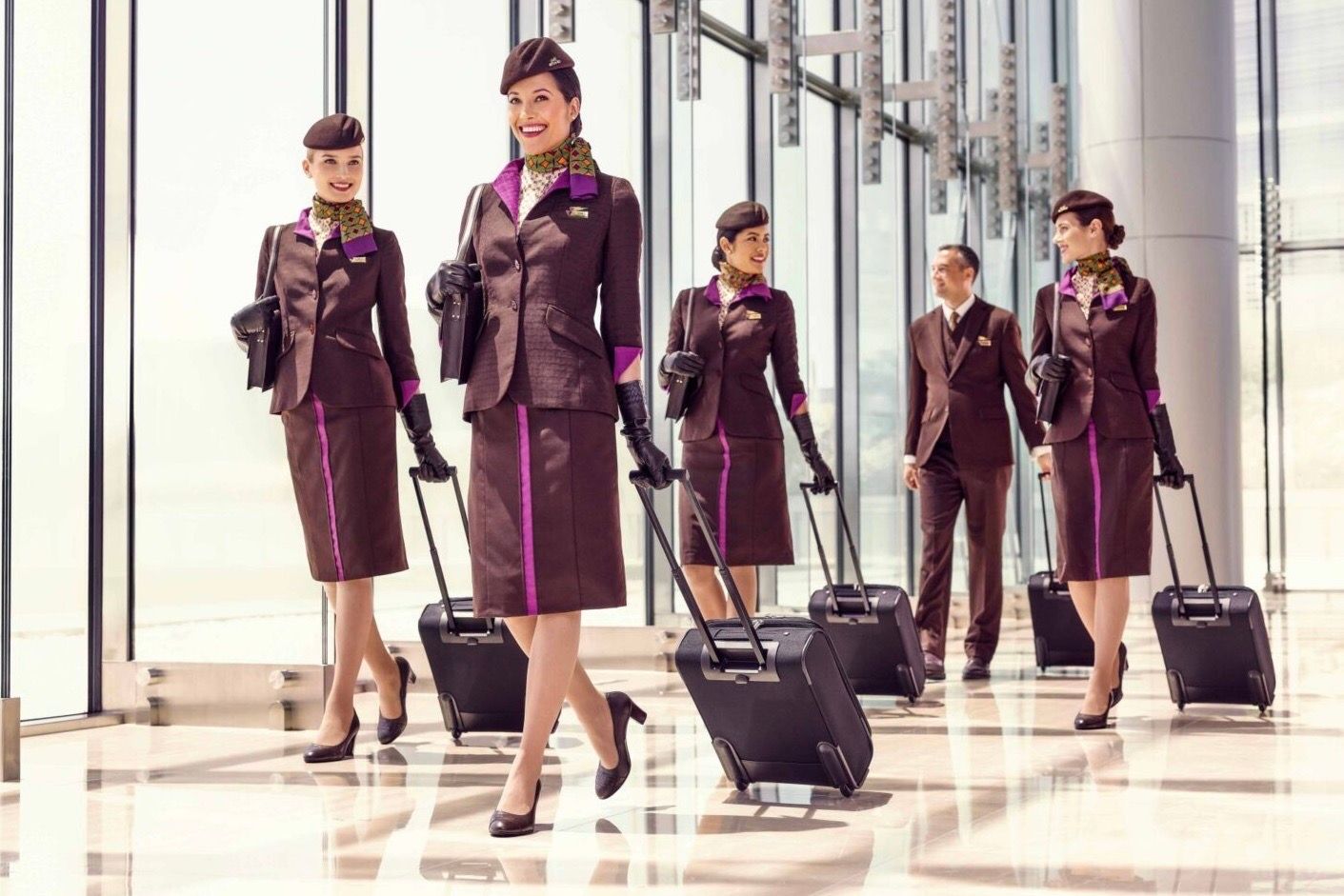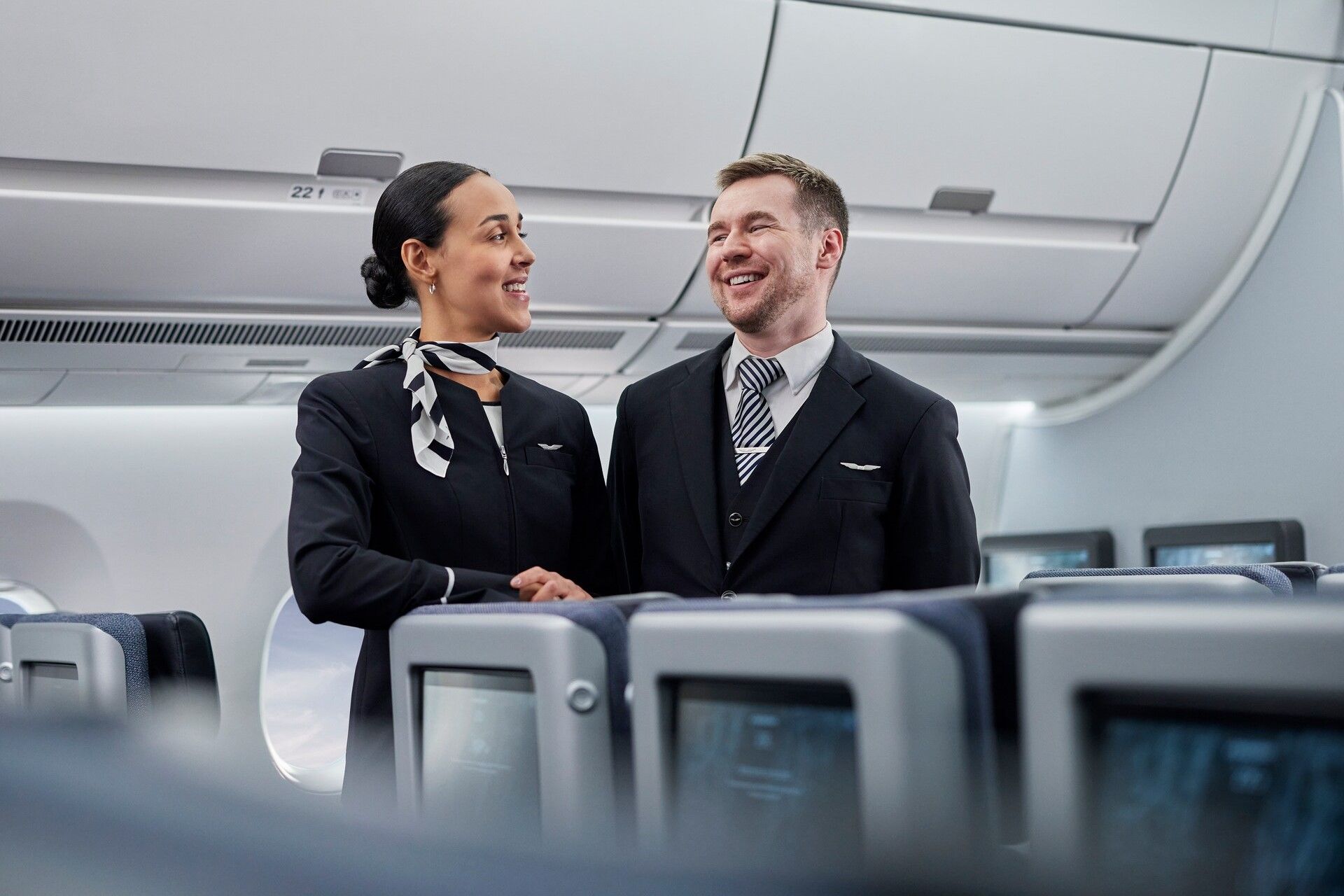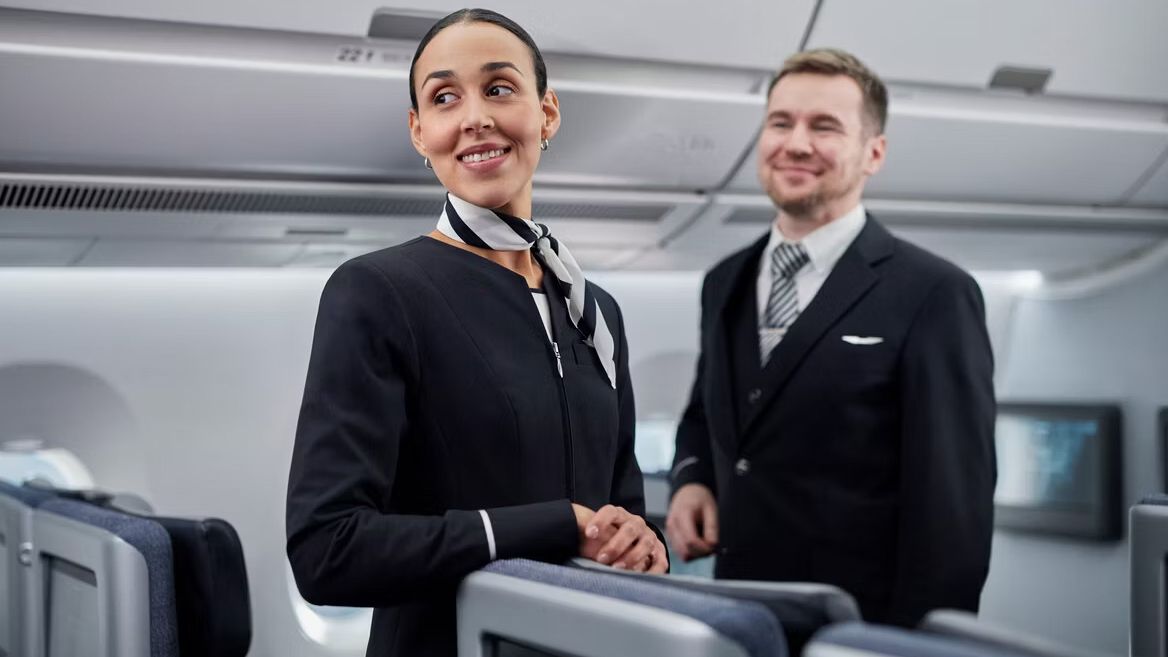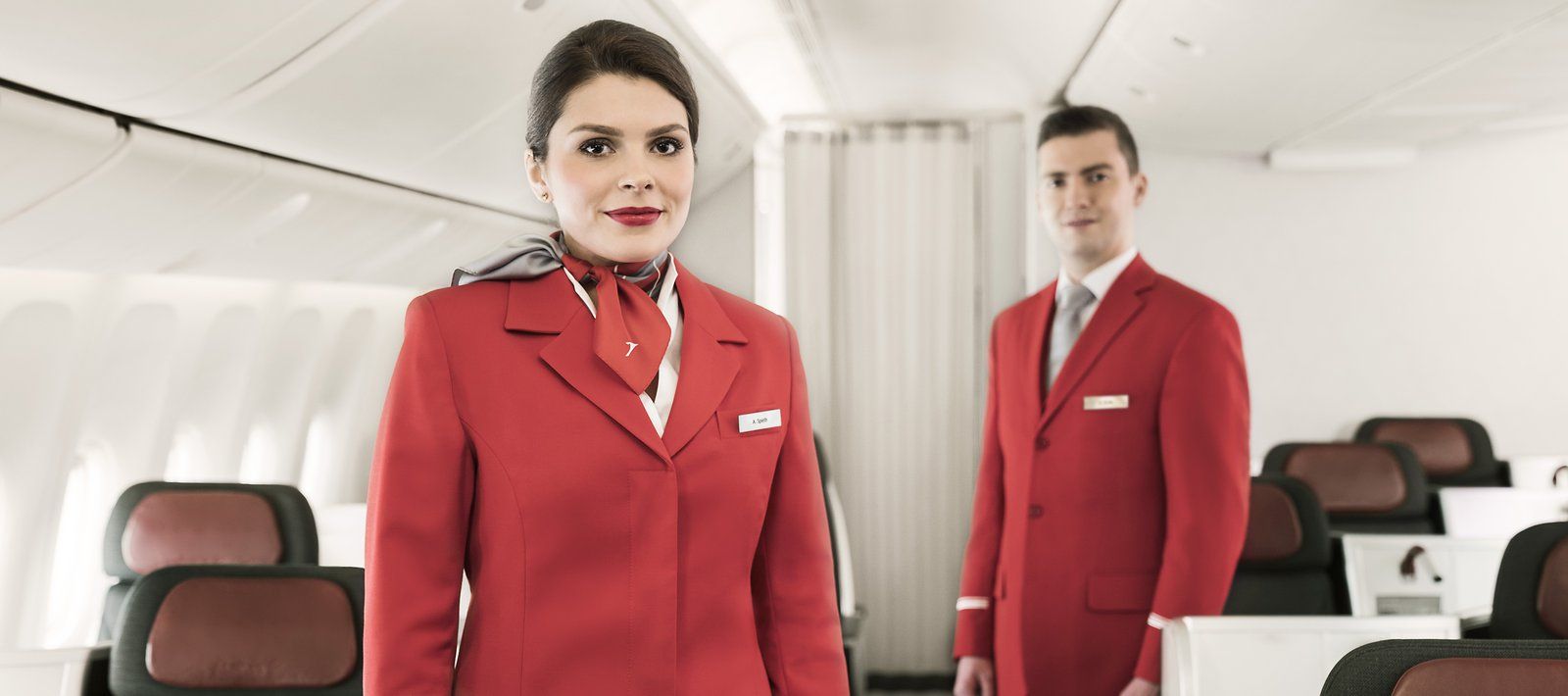Summary
- Cabin crew members sit in a rigid fashion with their hands under their legs during critical safety moments to minimize damage in case of an incident.
- The brace position for cabin crew varies by airline but typically involves a rigid pose with back and neck against the jump seat, knees and feet together, and hands on knees or under thighs.
- The cabin crew practices the brace position during take-off and landing and goes through a silent review to prepare for emergencies, ensuring awareness of emergency equipment and nearby passengers.
The responsibilities of a cabin crew are much more than helping with seating and serving meals and beverages during the flight. They are trained in a variety of areas to ensure the safety and security of all occupants and the aircraft. Cabin crew members follow specific procedures during all phases of flight.
As any frequent flier can attest, cabin crew take their positions on their jump seats during taxi, take-off, and landing, and at other times when instructed by the captain, such as in the event of severe turbulence. As these are times in which safety is critical, and perhaps when an emergency situation could be most likely to occur, you may notice that cabin crew members typically sit in a rigid fashion, with their hands placed under their legs. In this article, let’s take a deeper look at the reasons behind this.
Brace position
Brace position for passengers, as relayed by the FAA
- Slide well back in the seat as far backward as possible
- The fastened belts must not be twisted and tighten across pelvis firmly.
- Bend the upper torso well forward and place your head against the backrest of the seat in front.
- Place hands flat to the left and right beside the head against the seat in front.
- Stretch out arms in the front row and grasp your lower legs with your hands.
- Stretch out legs and, if possible, place them flat against the rigid structure of the seat in front.
The brace position for cabin crew varies depending on the airline safety procedures and the region. All are very similar but completely different from that of the passenger brace position. The aim is to keep the body in a rigid pose so that if there is any impact from an unplanned emergency, one is less likely to be severely harmed.
Photo: Austrian Airlines
In this situation, cabin crew members are required to be seated with their back and neck firmly against the jump seat and with their knees and feet together, placed firmly upon the ground. The attendants’ hands are placed either on top of the knees or under the thighs, with elbows held inwards. This position, however, does vary from airline to airline.
Seating variations
Even within an aircraft, the exact position can vary for a number of reasons. Namely, not all jump seats are the same, with some facing forward and others facing backward, a factor that greatly affects the safest position for cabin crew to be seated in.
For cabin crew members facing forward, their feet should be positioned slightly behind the knees, while those facing backward will have their feet slightly forward. In other variations, cabin crew members seated forward tip their chin to their chest, which may protect against injury caused by whiplash.
In the event of a sudden change of direction or movement, this could be essential for passenger safety. Furthermore, as cabin crew members act as leaders during emergency situations, it is essential for them to maintain the seating position that will be most likely to prevent injury.

Related
How Soon Before A Flight Do Cabin Crew Arrive At The Airport?
Is it a mad dash or a well planned journey?
Silent review
The cabin crew normally take this position from when they lock into their crew seat until the signal from the flight deck tells them that it is safe to move around the aircraft. During this time, they will also be completing the ‘silent review’, a process that evaluates all safety concerns prior to every take-off and landing. This includes being aware of emergency equipment in their vicinity, the door operation, commands given, able-bodied passengers nearby, and any visual clues outside the aircraft.
Bracing in a planned emergency
The final brace position is that which the cabin crew take in the event of a planned emergency landing, where the cabin crew keeps the lower body the same, but one hand is on top of the other and placed behind the head, with elbows held inwards. This allows the cabin crew to hear and shout emergency commands while protecting their faces and heads from any flying debris.
While these positions may sound complicated, the crew is taught them in training and then practice while working on different aircraft types and while sitting in multiple kinds of jump seats. With such routine use, it is unsurprising that these positions have become a force of habit.
Some crew also do this when flying as a passenger, just because it’s an automatic movement. Nonetheless, when operating an aircraft in colder climes, the position can still help warm some frigid fingers.

Related
Transferrable Skills: What Cabin Crew Can Do When Changing Career
How cabin crew skills relate to other industry roles.
Have you ever noticed cabin crew members in braced positions sitting on their hands? Share your expereince in the comments section.


